by Gideon Lehmann | June 25, 2018
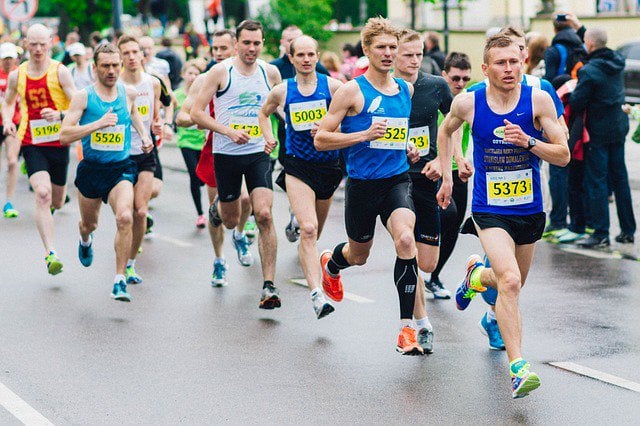
7 Tips for Live Blogging Your Running Event
From personal experience, I know there’s nothing more exciting than being part of a large running event. From kids high-fiving runners to live music being performed at different points of the race and volunteers handing out water and snacks, there’s always something taking place.
As the organiser of a running event, you’ll want to capture these moments and be able to update your runners with important information. You’ll also need to keep spectators well-informed once the race begins. A live blog will allow you to publish all your updates in one place, ensuring that readers can easily keep up-to-date with the race.
To help you get started, we’ve prepared seven tips that will help you get the most out of live blogging your race day.
This video is made using InVideo.io
#1 Prepare coverage before your running event begins
By having content prepared before the race begins, you’ll have enough time during the event to focus on more pressing updates. Content to create beforehand could include:
- Posts detailing the runners’ profiles
- Interesting facts about the race and its history
- A list of things to see along the race course (monuments, buildings, bridges, etc.)
That way, even during some of the less exciting moments in the race, you’ll always have something to publish.
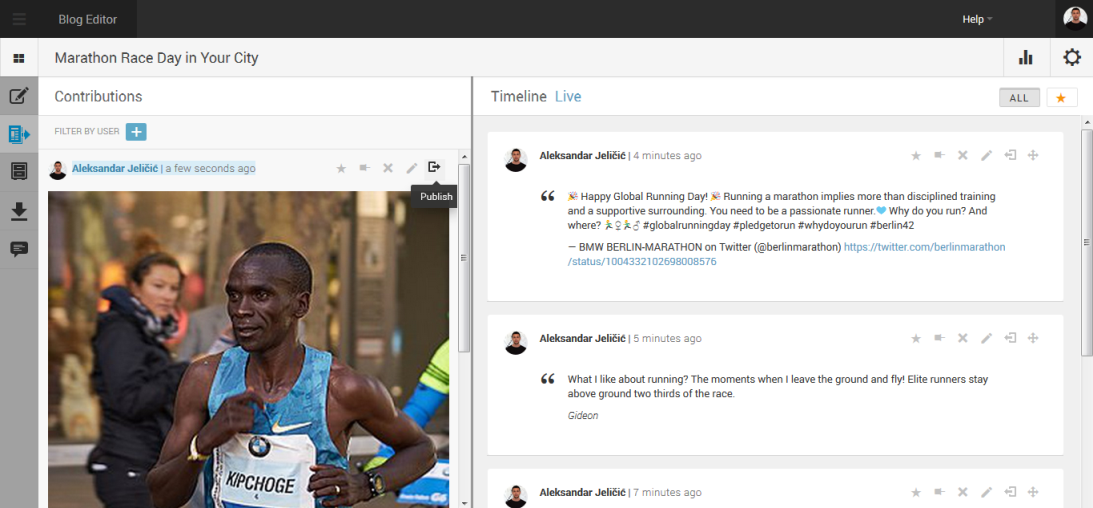
Posts like profiles on talented runners can be prepared well in advance and saved in Live Blog’s Drafts or Contributions sections for when you need them.
#2 Engage your readers
By introducing a social media hashtag, such as #LondonMarathon, before your running event takes place, you’ll be able to find relevant social media posts to include in your live blog. You can further increase reader engagement with your coverage by using Live Blog’s user commenting feature, which allows you to collect, moderate and publish your readers’ comments.
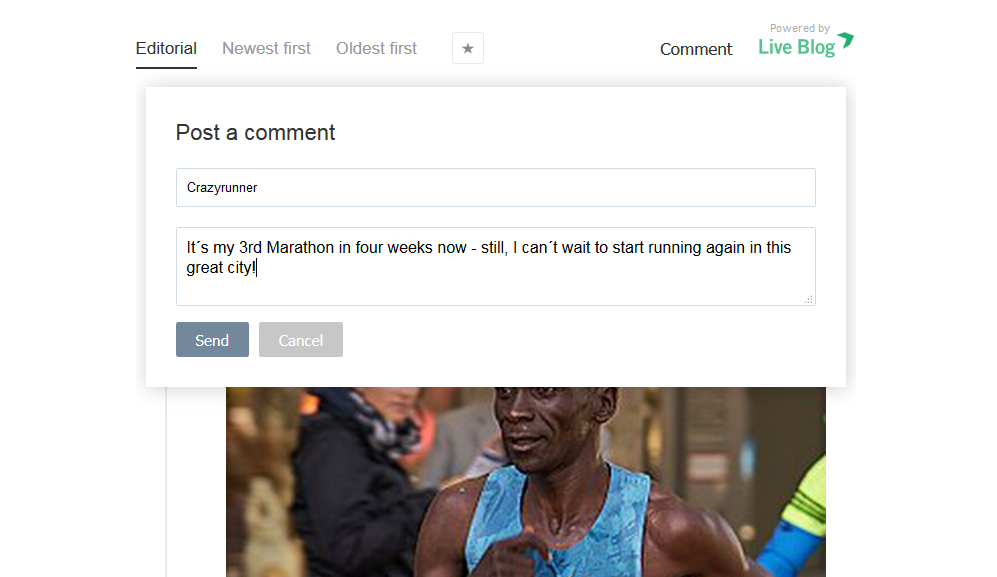
Readers can submit comments to your live coverage.
#3 Organise your live blog’s timeline
Giving your live coverage a clear structure will help your readers keep track of important updates and help latecomers to your coverage get quickly up to speed. Pinning a post will mean that it stays at the very top of your live blog’s timeline, ensuring that it is the first thing a reader sees. Highlighting posts that contain important pieces of information, such as who is leading at the halfway mark, allows for readers who are pressed for time to quickly scan through your live blog.
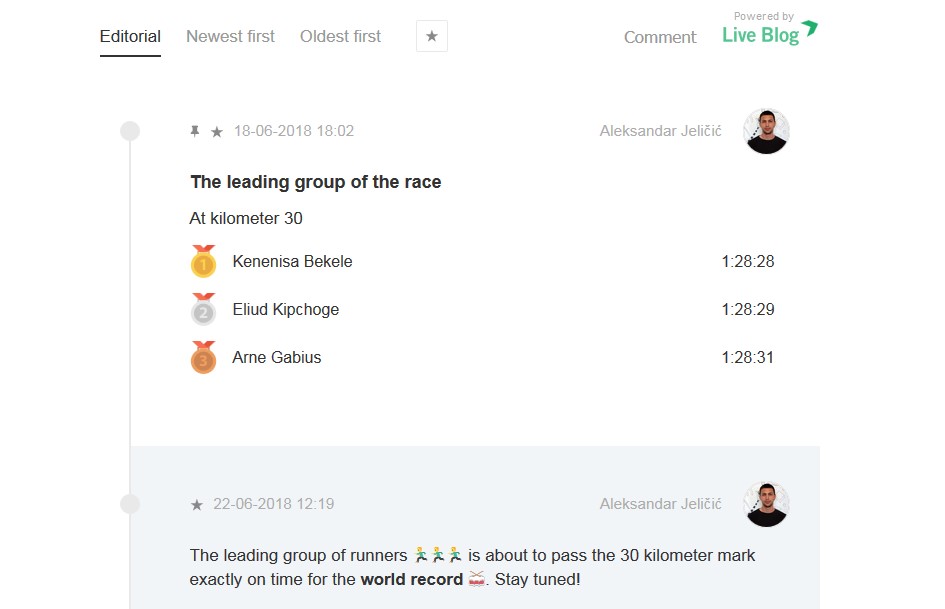
Ensure readers get important information by pinning and highlighting posts.
#4 Make your data stand out
To help you cover a wide variety of events, Live Blog has several post types available, including scorecards, play-by-play commentary and the presentation of statistics in charts and graphs. You don’t even have to be limited to the existing post types either, as it’s easy to create your own with Live Blog’s freetype feature.
When live blogging the International Association of Athletics Federation (IAAF) World Championships in 2017, AthleticsAfrica created a custom post type that allowed them to display small medals next to the winners of a race, which helped to improve the look and feel of their page. The medal post type is now a permanent post type on Live Blog so others can also display the results of the race in this visually appealing way.
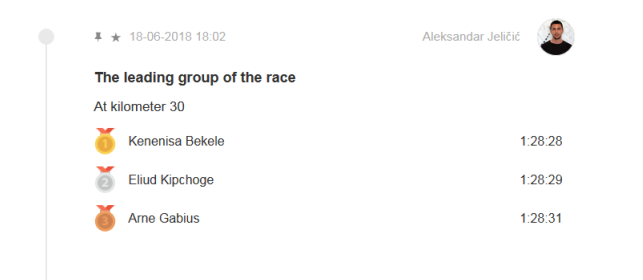
The medal post type is a simple, yet informative, way of displaying the race results.
To show you just how easy it is to create a specific post type for your running event, I created a custom post type using Live Blog’s freetype feature (seen in the image below). I wanted to call attention to some of the important facts and figures of the running event, so I made a post type that would allow me to make certain parts of my text bold and larger.
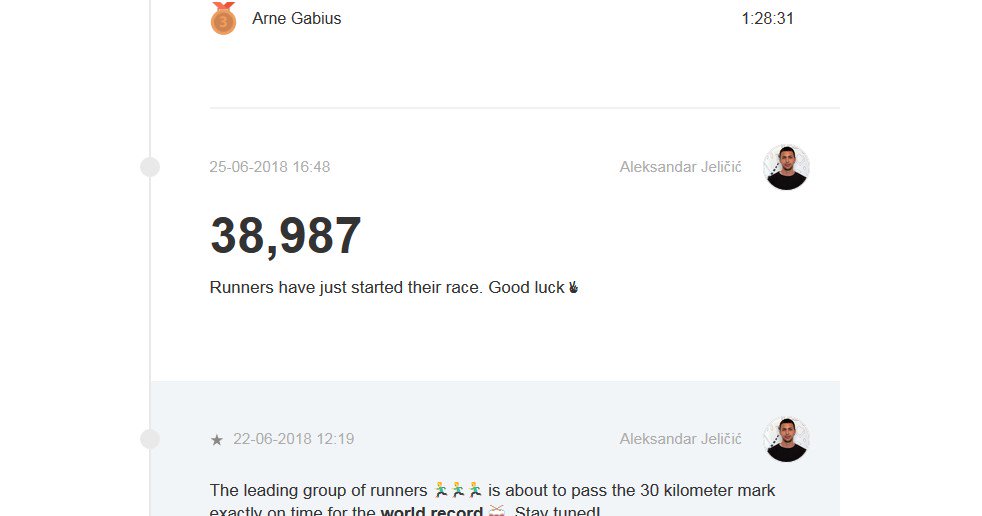
Create your own post types with Live Blog’s freetype feature.
#5 Involve your sponsors
Style your live blog according to your sponsors’ corporate identity and branding. This can be done by featuring their logo prominently on your blog and by including ads for their services in your coverage. You may also want to mention your sponsors in prepared posts that concern key moments in the race – perhaps in the lead up to announcing the winners, or if a new national or world record has been set.
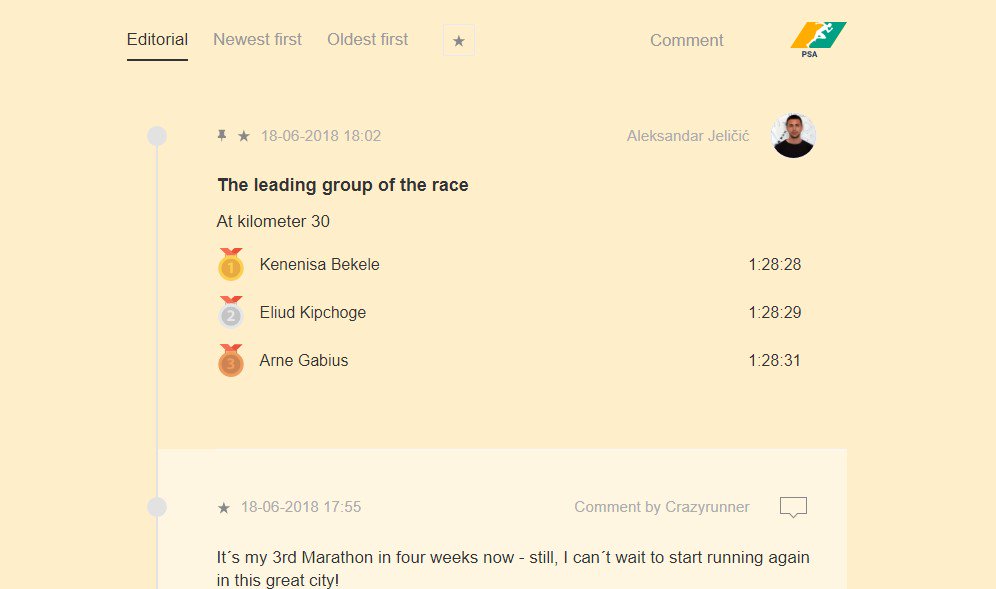
Style your live blog with your sponsor’s colour scheme in mind.
#6 Share customised coverage
To reach a wider audience, consider sharing your live coverage with media partners and sponsors. With Live Blog’s output channels, you can customise the look and feel of your live blog for every outlet that you choose to share it with. This means that the same content can be shared on multiple channels, each with a different design.
#7 Turn your live coverage into a multimedia report
While during the race you’ll want the latest updates to come up first in the reader’s timeline, after the event ends you may want to change the default order so that the reader sees the oldest posts first. By doing so, the reader will be able to read the live blog as a multimedia report on the whole event.